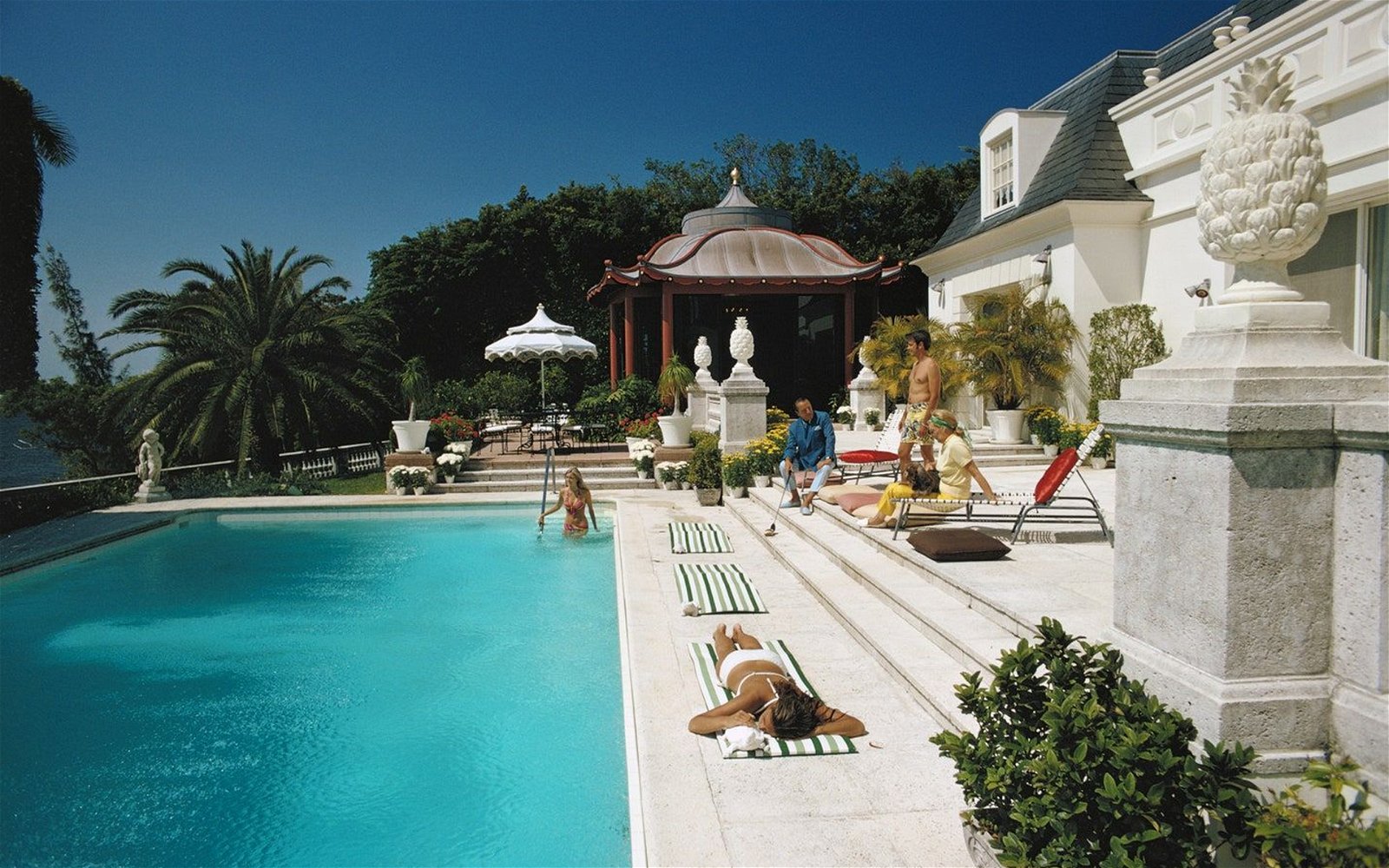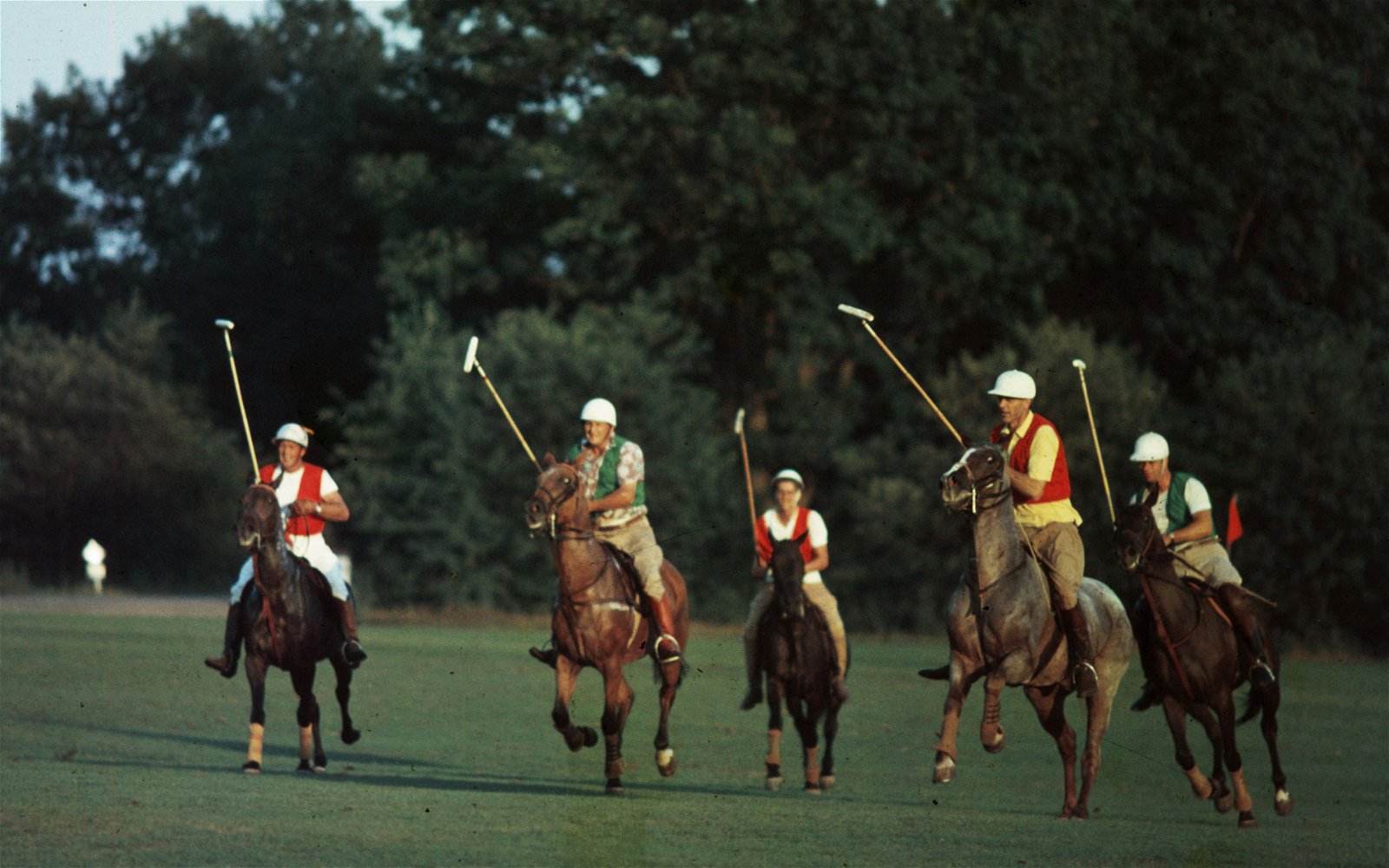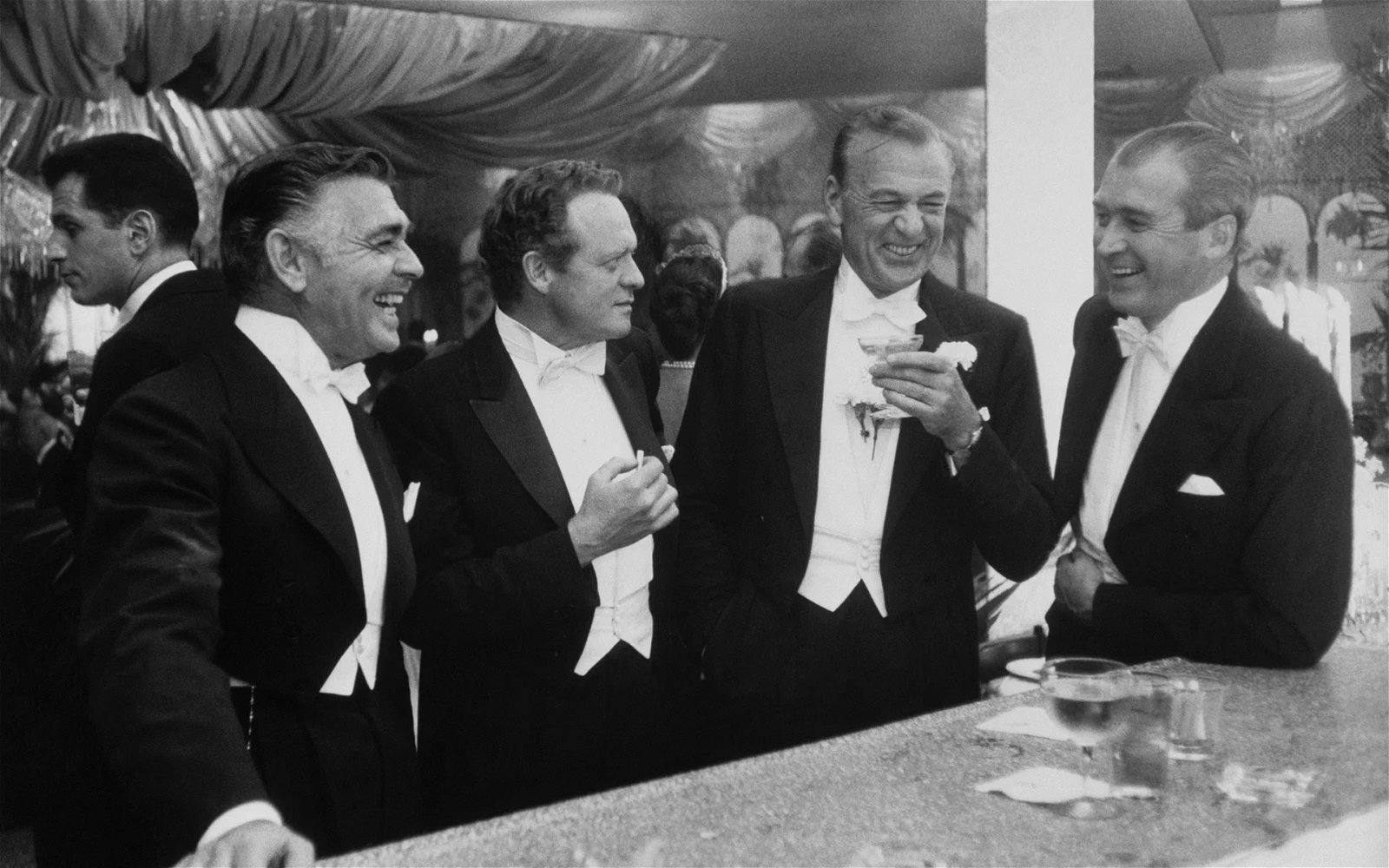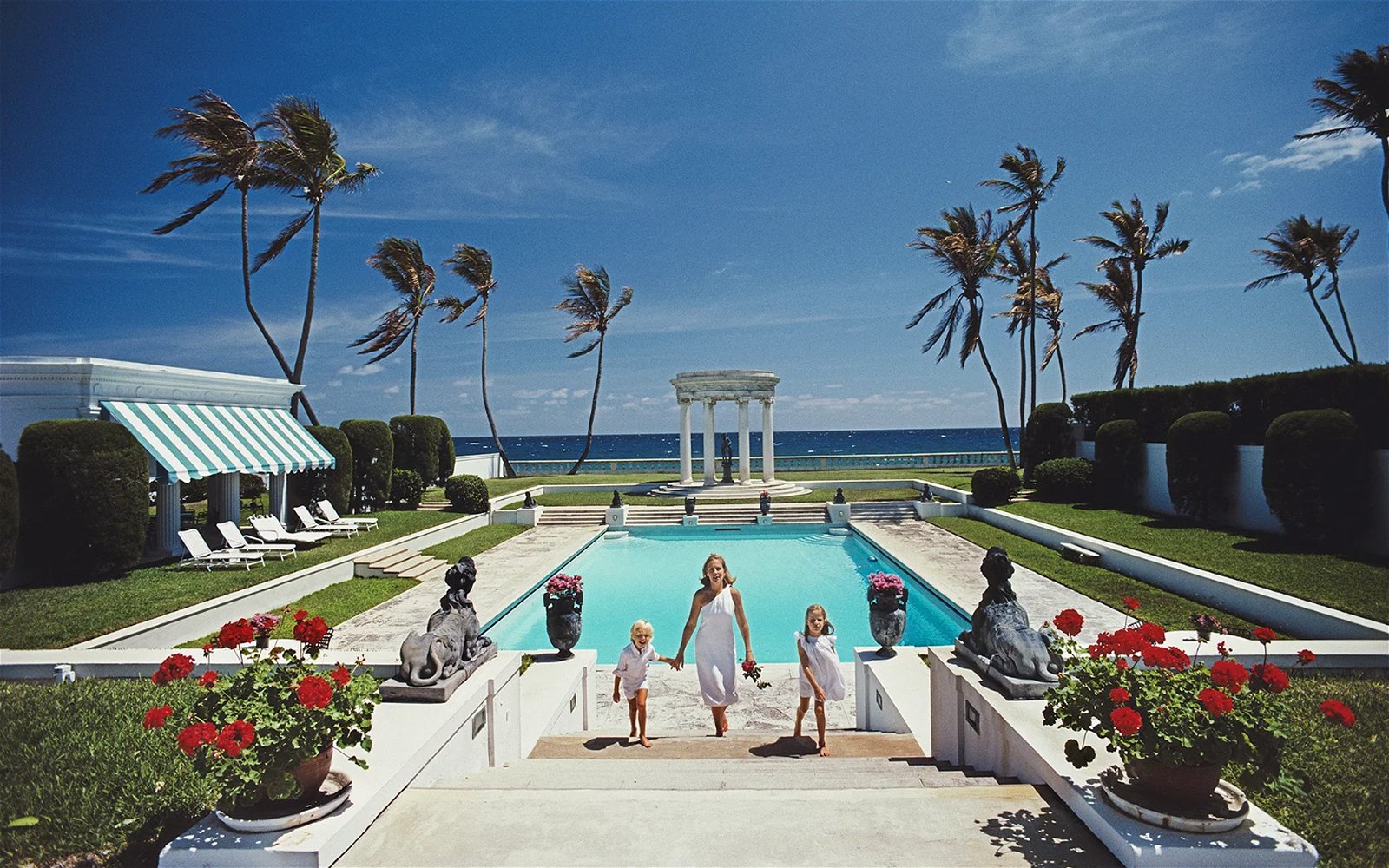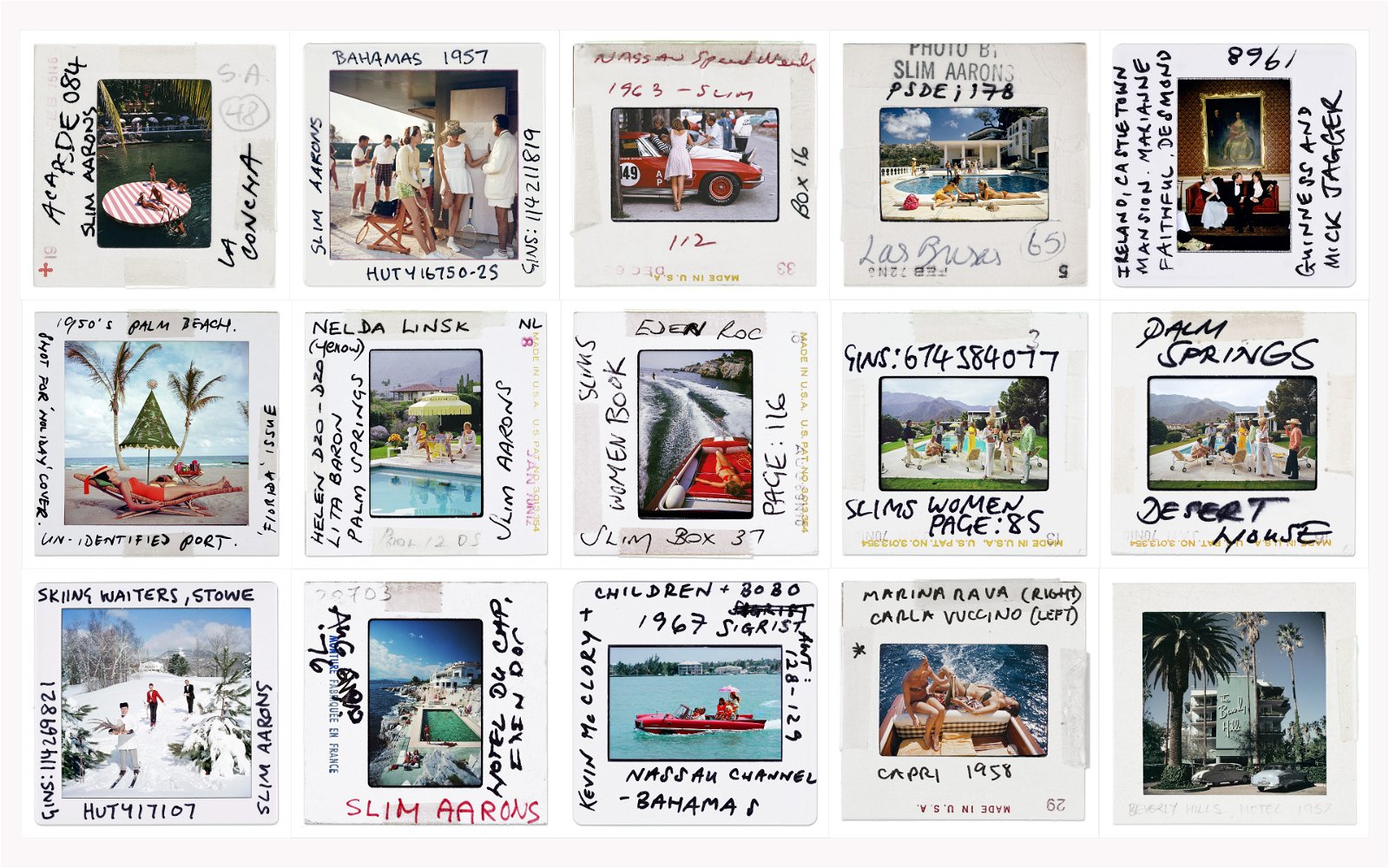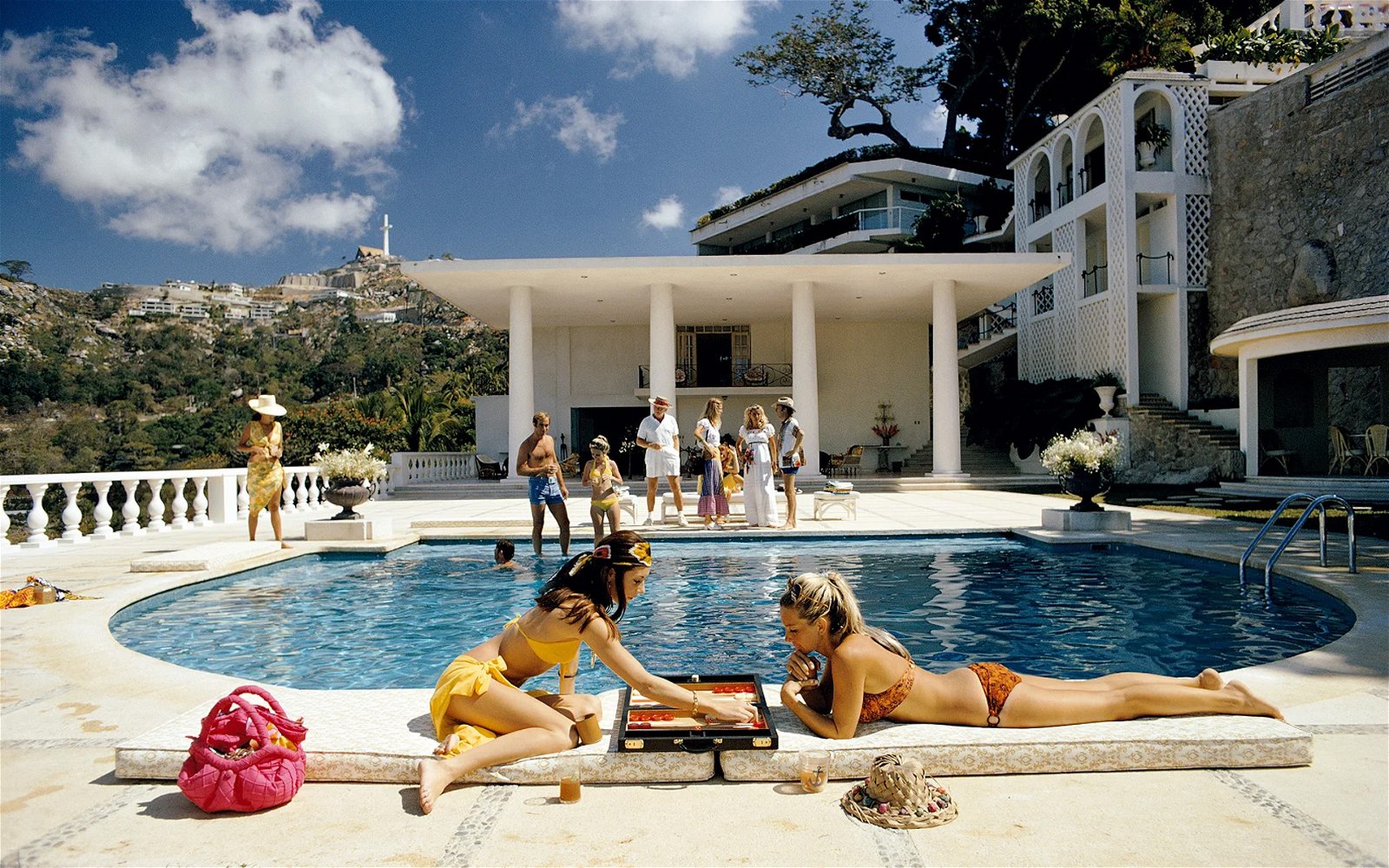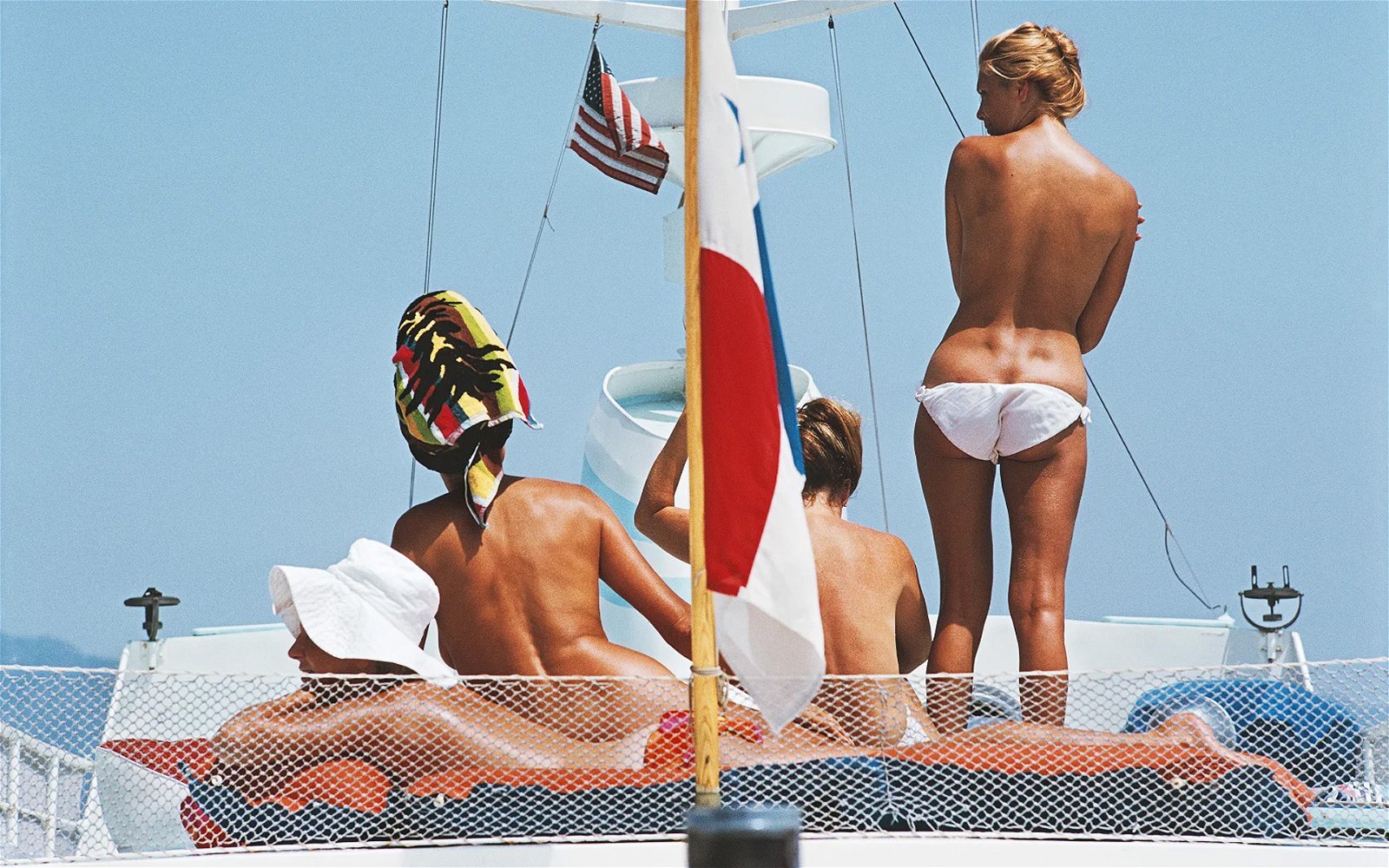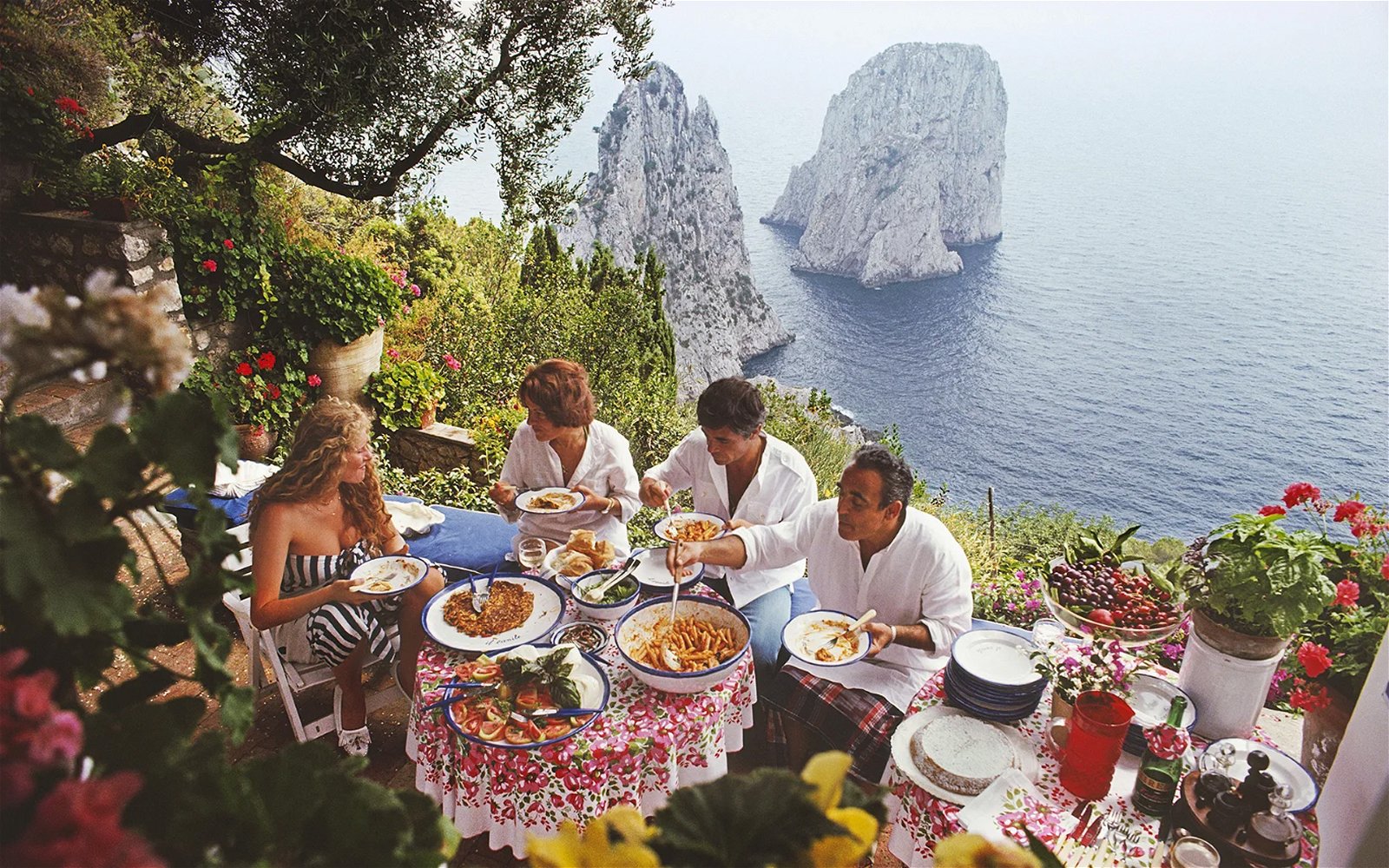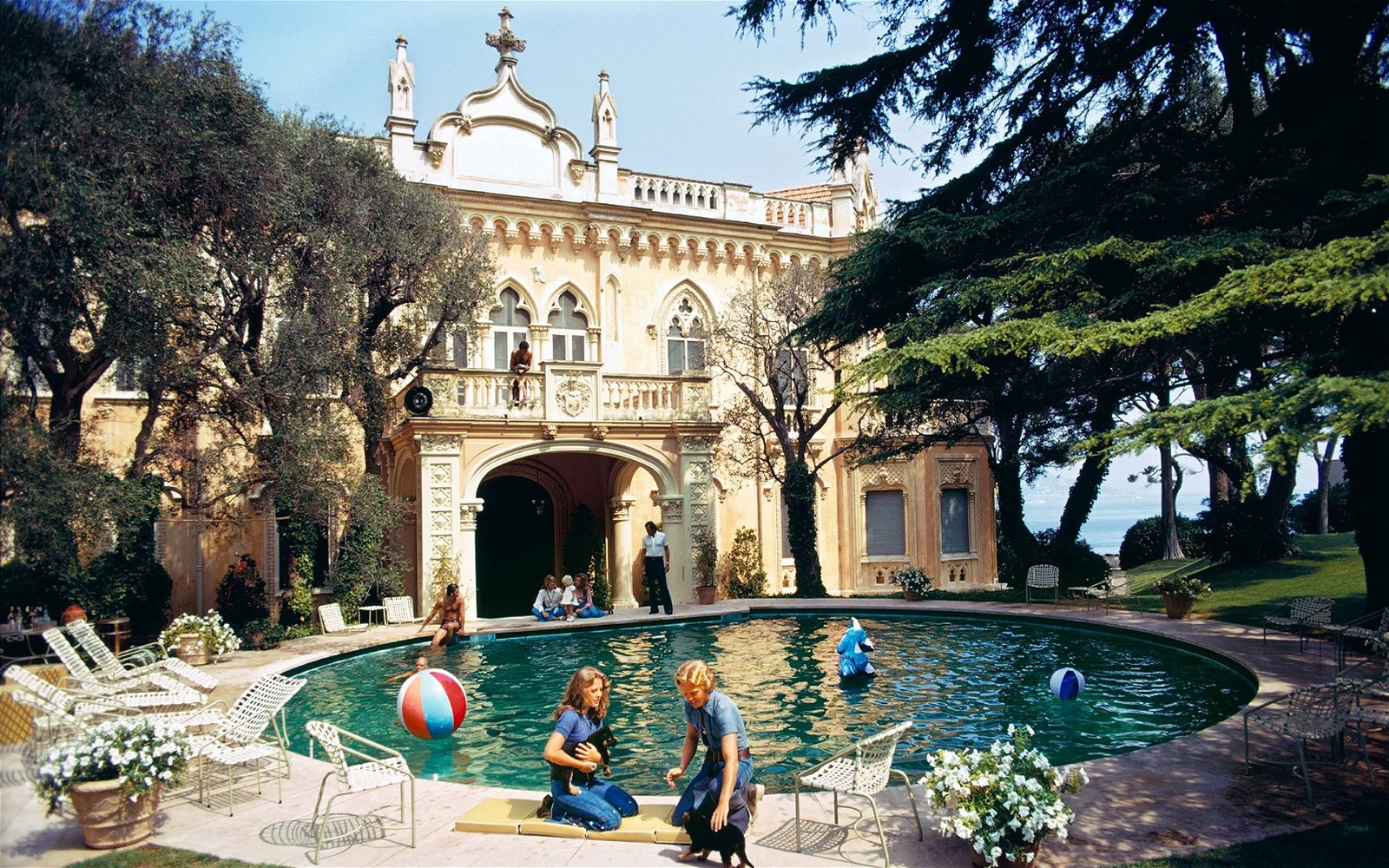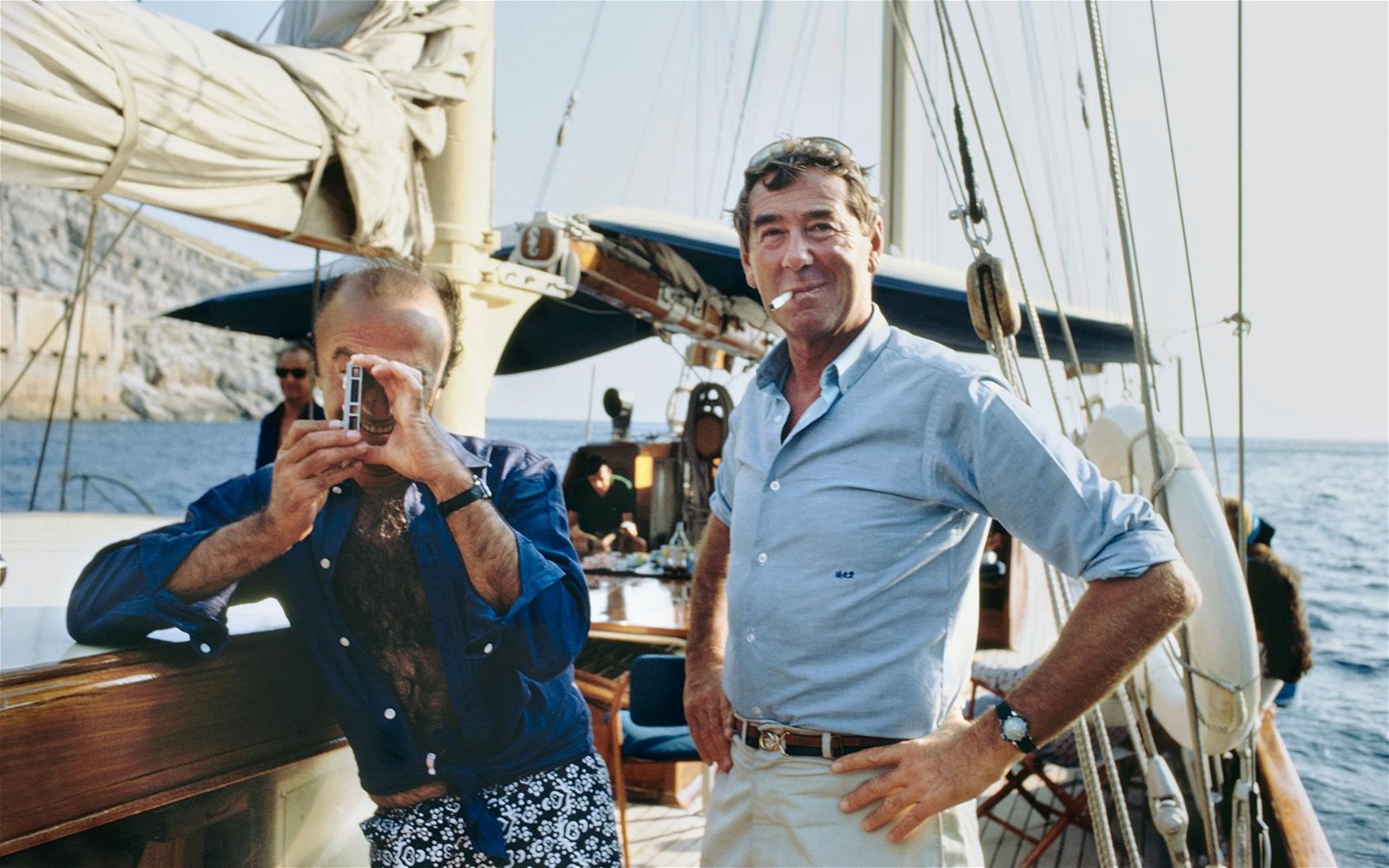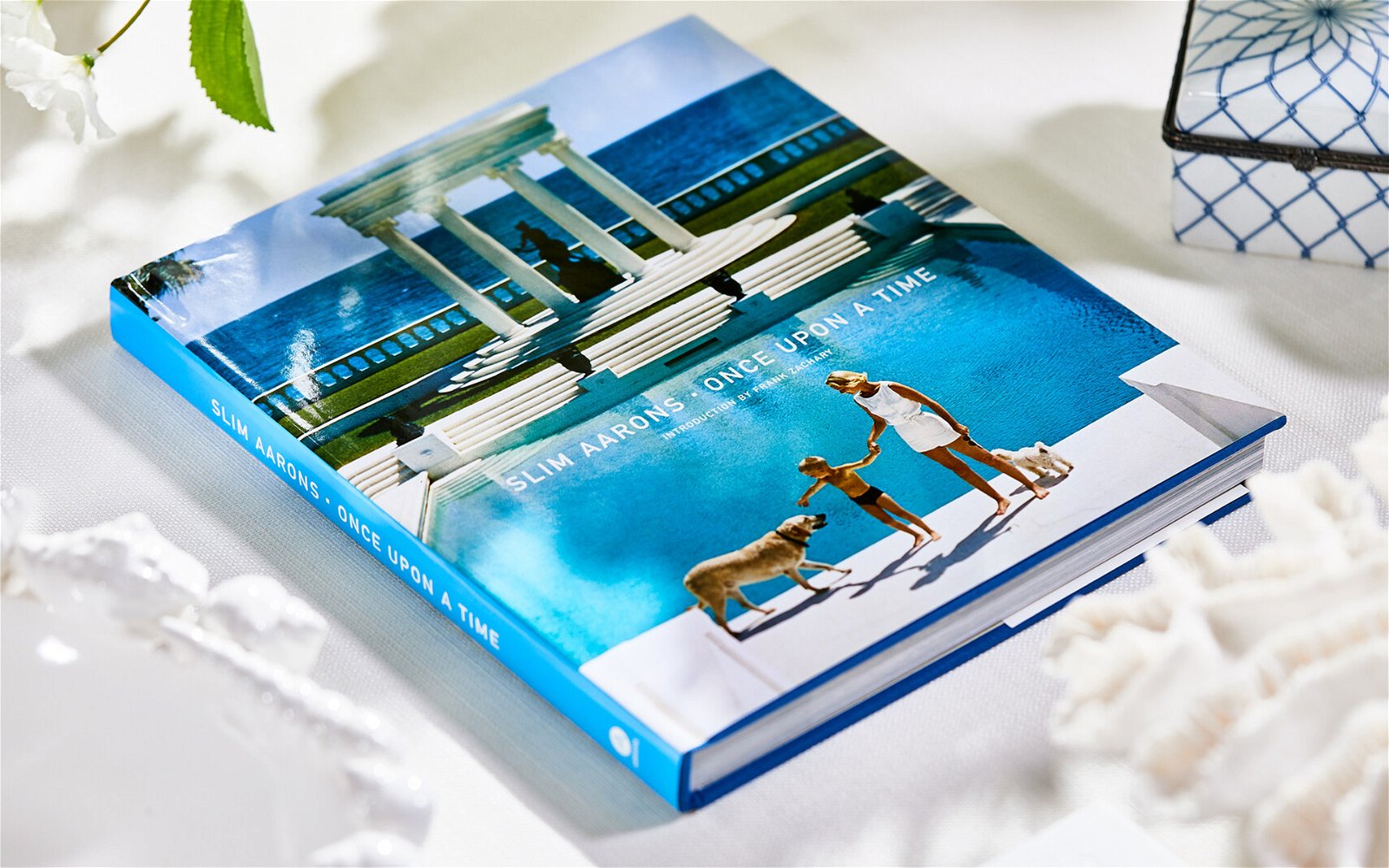undefined
SLIM AARONS
A life well lived
SlimAarons
LIFE
- BIOGRAPHY -
Life is Beautiful
- "For six decades I have concentrated on photographing attractive people doing attractive things in attractive places", he summed it up a few years before his death.
Spectacular pools, salt-splattered linen shirts and golden-brown skin – no one has captured the
dream of the jet set life as elegantly. But the story of the vulture photographer who got his own
key to the celebrities' pool house reads exactly as you would have imagined, and at the same
time not.
- "I believe in fairy tales", he said himself at one point.
- BIOGRAPHY -
Early life
Born as George Allen Aarons on Oct 29, in 1916 in New York City (his six-foot-four frame and lanky build earned him the nickname Slim).
Slim Aarons began his career as a war photographer at just 18 years old, Slim Aarons enlisted in
the United States Military Academy, also known as West Point, New York. Throughout his
years at the Academy, he worked as a photojournalist.
Photojournalism was still a new phenomenon, and while serving in World War II shot for the
weekly Army magazine called Yank.
Slim Aarons’ passion for photography as a young adult went undiscovered during his time at
West Point until movie director Frank Capra arrived at the Academy in the early 40’s. Capra
was working on the film “Prelude to War”, commissioned by the Office of War Information, yet
Capra was seeking a young photographer who was willing to work overseas to gather combat
footage for a spin-off series of military newspaper Stars and Stripes.
Slim Aarons’ charm and enthusiasm resonated with Capra and as a result, Aarons was sent to
Europe.
During World War II, he was injured while serving as a photographer. He covered the desert
war in North Africa and saw the liberation of Rome. He was even awarded a Purple Heart for
his work. (“I gave it to a blonde I knew after the war, she liked the color”, he told Vanity Fair in
2003).
- BIOGRAPHY -
After the War
When he came back after the war, his goal was clear: He wanted the good life. A life so light as
a feather.
- I had walked through enough concentration camps and bombed-out villages. I had slept in
mud and been shot at. I owed myself a simple, luxurious life. I wanted to live on the sunny side
of the street, he said himself.
He made it to Hollywood. As far from reality as you could get, as he later summed it up. He
began capturing movie stars such as Clark Gable, Lana Turner and Gary Cooper. In fact, he
himself was handsome enough to land roles in a couple of Hollywood movies, but was so
nervous that he couldn't deliver his single line. That story was found out by superstar Gary
Cooper and told to friends Van Heflin, Clark Gable and Jimmy Stewart who snorted with
laughter. Aarons captured the moment as they laughed at his failed acting attempts and took
perhaps his most famous picture, The Kings of Hollywood, at Romano's in Beverly Hills on
New Year's Eve 1957.
- BIOGRAPHY -
La Dolce Vita
He freelanced for a variety of magazines and began to make his way into Hollywood's most glittering circles. He shot for Holiday alongside names like Henri Cartier-Bresson to texts by Joan Didion, Ernest Hemingway and William Faulkner. He traveled the length and breadth of the world. When he was assigned by Life Magazine to travel to Korea to cover the war, he said no. The only beach he intended to photograph in the future was one where there were blondes, he informed the respected magazine. He wanted to photograph surface, luxury and glamour.
He had found home, in a way. He was admitted to society all the way into the bedroom, to the pool and the mountain trip. He shuttled between Cap Ferrat, Capri, Palm Springs, Acapulco and Nassau. It is of course possible to list all the celebrities Aarons photographed in their homes or summer houses: the Agnelli couple, Marlene Dietrich, Jacqueline Kennedy, Marilyn Monroe, Mick Jagger and Grace Kelly are just a few of them. Above all, there is a stream of counts, barons and princes with appetizing names such as Polly Trott Hornburg, Bianca Hanau-Schaumburg and Baron Hubert von Pantz. Only three things he categorically refused to photograph: jeans, t-shirts and sneakers.
His charisma was talked about. Everyone he photographed took a liking to him, despite a volatile mood. When John F Kennedy drove past him in Palm Beach, the president stopped the car, rolled down the window and asked if the girl from the photoshoot at Lake Como was really as beautiful as she was in the pictures. When Aarons tried to photograph the horse race at Ascot, he was about to be pushed down by brusque guards, but was saved by safe hands. When he looked up, it was Prince Philip who came to the rescue. When mob boss Lucky Luciano was exiled to Sicily, he chose Aarons as his private photographer, with the only caveat that he was not allowed to pick up the camera when the mob boss kissed his father.
- BIOGRAPHY -
Kaufmann Desert House
Many have speculated why the photograph has become one of Slim Aaron's most iconic images. Was it the big hair and bare midriffs, the mod 1970s outfits, the dramatic view, or its "martini modern" aesthetic? The home's owner then, the Palm Springs socialite Nelda Linsk (in yellow), related years later that Slim had called and said, "I want to come over and do a pool shot. Call some friends over" His directive for what they should wear was simple: "Pull something out of your closet." Nelda Linsk was a Palm Springs real estate expert, and her husband, Joseph Linsk, was an art dealer. The couple was part of a social circle that included Hollywood celebrities, artists, and other members of the cultural elite. Capturing the glamour and sophistication of the Palm Springs lifestyle. Today, and is considered a classic example of mid-century modern style.
- BIOGRAPHY -
The Good Life
In the winter of 1954, the attractive person doing the attractive thing in the attractive place was Lorita Dewart (or Rita), his new wife, formerly an assistant at Life Magazine. Rita served as a muse several times for her husband, and when she wasn’t the subject of the photo, she helped add to the just-so-happened-glamour of Slim’s scènes. “If you look at a beach scene or a pool scene or a party, and there’s somebody in a red bathing suit or a red sweater who has their back to you, that’s probably her—there to add color.”
Slim, his wife Rita and daughter Mary lived for many years in Katonah, N.Y., spending winters in Gstaad or Palm Beach, and summers on the French or Italian Rivieras. In 1974 he published "A Wonderful Time: An Intimate Portrait of the Good Life." A sequel, "Once Upon a Time," in part a reprise of the first book, was published in 2003. In 2005 a third book, "A Place in the Sun".
Slim was, as one critic wrote, an ‘insider among insiders.’ His work makes the world look far more beautiful than it ever really was, and far more perfect than it could ever really be, even for his glamorous subjects.
Many of Aarons’s images were taken during the 1960s and ’70s, when America was on fire and ripped apart.
- BIOGRAPHY -
A life well lived
Knowing Aarons’s background, it’s a statement that has weight. Slim’s own life was also more
perfect than it could ever really be: he had invented himself as much as he invented scenes in
the worlds he photographed.
Around the age of 70, he retired and supported himself by selling his pictures to various magazines around the world as the opportunities popped up. All that would change one day in 1997
when Mark Getty, having just launched the Getty Images photo archive, came knocking on his
door. After realizing the young “fella” in the Windbreaker wasn’t the gardener, Aarons invited
him up to his attic to look at his life’s work, and a deal was made on a handshake.
The collection contains more than half a million photographs and is now housed at Getty
Images’ state-of-the-art storage facility in London. The team at Getty Images has been cataloging and digitizing works from Slim’s archive for nearly a quarter century – which this special
print collection pays homage to.
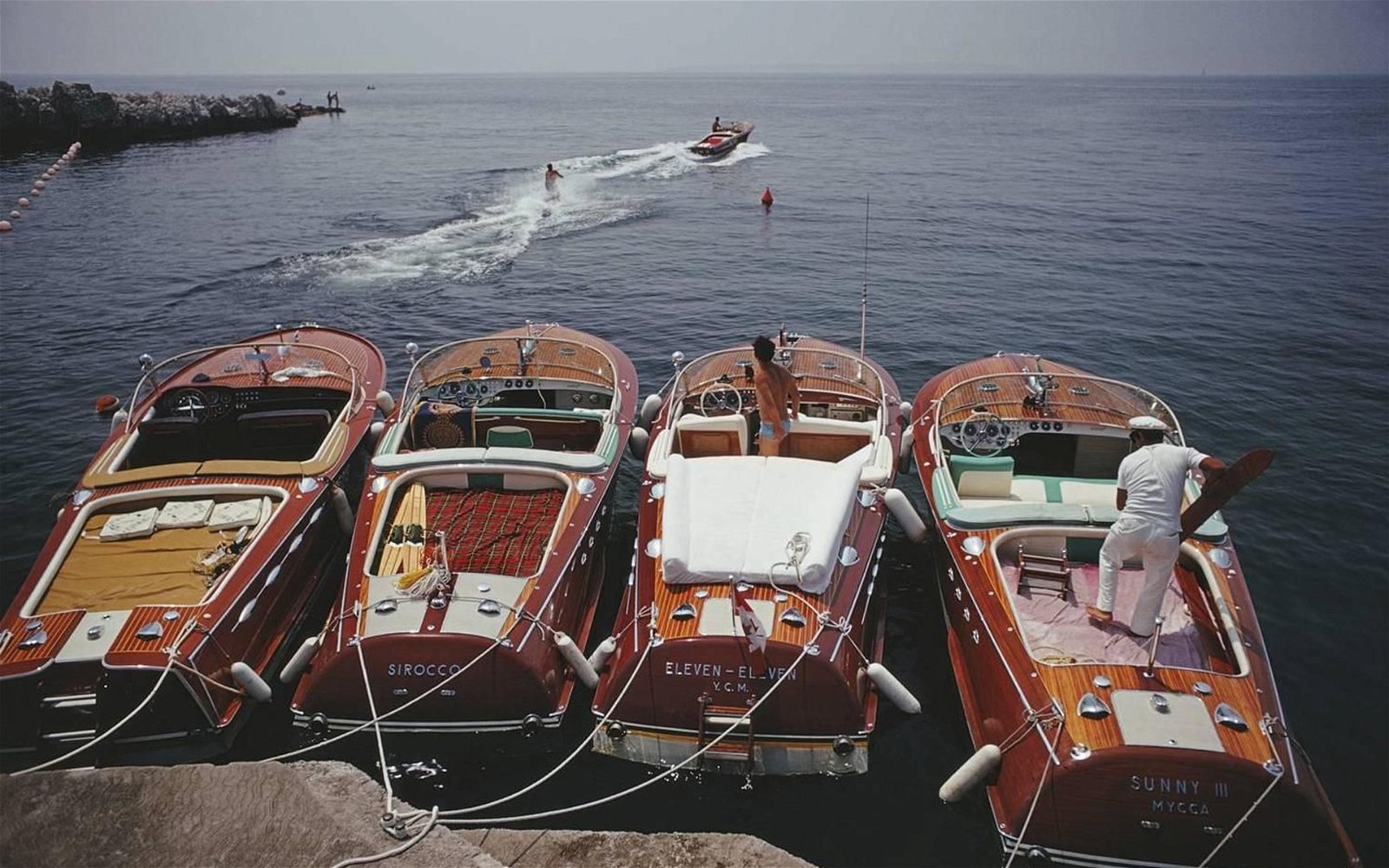

.jpg)
